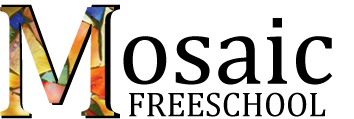|
with Leigh Ann Yoder PhotosynthesisWe went over both the definition and the two stages of photosynthesis in detail and reviewed the photosynthesis equation. Students are expected to both memorize and understand the equation. I explained that if they can remember the two raw materials, Carbon Dioxide and water, and the number 6 they should be able to balance the equation with the products. We also discussed the difference between autotrophs and heterotrophs and how the sun's energy is passed throughout the food chain via photosynthesis. We conducted two hands-on activities relating to photosynthesis. The first was a simple chromatography which allowed the students to observe the pigments in a leaf. We had a variety of leaves available and were able to see the differences. I recommend the students conduct this activity at home later in the spring as they are certain to see more stunning results. They can follow the directions on page 47 of the textbook. Second, the students had an opportunity to mount their very first slides! Using romaine lettuce and forceps they carefully stripped a piece of the upper dermis and mounted it. Using iodine as a stain they observed the stomata on the underside of the leaf. Ask your student what the purpose of the stomata are. We ran out of time, but I believe each student had time to view their slide. We will talk a bit more about the slides next week and compare them to the cross sections we viewed several weeks ago. RespirationRespiration is the opposite of photosynthesis. In class we focused on cellular respiration which takes place within animal cells. The emphasis was on the way in which the cells obtain carbohydrates and Oxygen and use these raw materials to produce energy, water and Carbon Dioxide. Again, we spent time on the equation, so students should easily memorize the respiration formula once they master the one for photosynthesis. We also talked about both alcoholic and lactic acid fermentations. Students need to remember fermentation is respiration without oxygen. Also, alcohol and lactic acid are the products of fermentation, not the raw materials. As a class we set up a simple experiment with yeast and sugar to observe the product of alcoholic fermentation. This activity is described on page 49 of the text. As you can see, our class time is full. I had hoped the students would have made a slide mount of the yeast cells, but we ran short. I do appreciate everyone arriving to class on time and prepared as we don't have a minute to spare. HomeworkMandatory:
Read chapter 2.3 on Cell Division and complete the Study Guide Complete the Math Analyzing Data activity on pg. 60 of the text Optional: Enrichment (in notebook) - History of Fermentation Online Activity on pg. 59 Remember - We will be making DNA Keychains before class next week. Please arrive promptly at 9:30 if you would like to make one. Comments are closed.
|
Categories
All
Archives
May 2016
|



 RSS Feed
RSS Feed